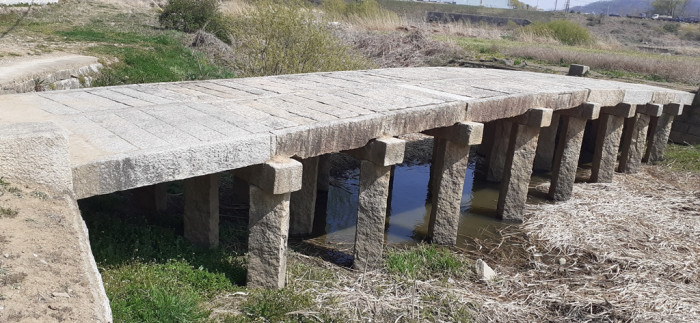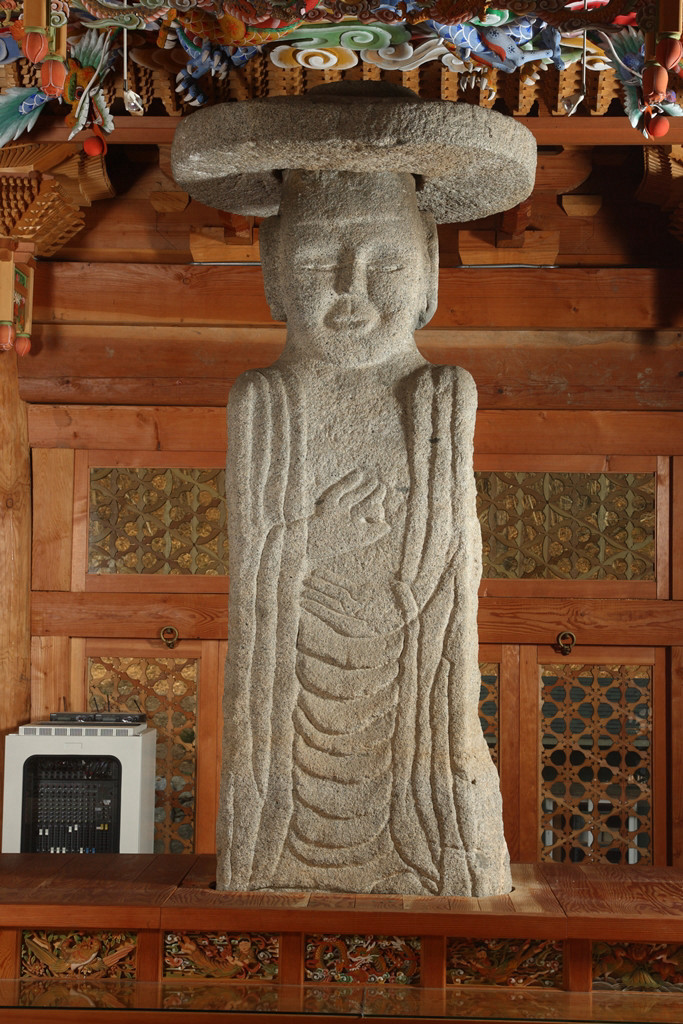GyeongGi Cultural Foundation
Introducing the Cultural Assets of Our Gyeonggi Region
‘Goyang Gangmae Stone Bridge’ and ‘Yangpyeong Bulgok-ri Stone Nyorae Statue’ designated as cultural property.
○ Goyang Gangmae Stone Bridge
- A stone bridge for private passage showing the combination of superior technology and aesthetics.
○ Yangpyeong Bulgok-ri Stone Nyorae Statue
- Valuable data showing the distribution of Mireuk beliefs that were popular in the Gyeonggi area of the Joseon Dynasty.

▲ Goyang Gangmae Stone Bridge designated as Gyeonggi-do Cultural Property
On August 20th, Gyeonggi-do introduced the 'Goyang Gangmae Stone Bridge', a rare stone bridge in the province, and the 'Yangpyeong Bulgok-ri Stone Nyorae Statue', which shows the distribution of Gyeonggi-do of the Maitreya faith, as Gyeonggi-do cultural properties. I have specified. These two cases were also announced as cultural properties on May 8.
'Goyang Gangmae Stone Bridge', located in Changneungcheon, Gangmae-dong, Goyang-si, connects the riverbank to the reed island in the middle of the river. The first construction period was during the reign of King Yeongjo in the Joseon Dynasty. This bridge is the only stone bridge for civilian traffic that remains in Gyeonggi-do as important data showing that the traditional bridge construction method and structure of the Joseon Dynasty was passed down to the modern era.
The method of using wood was applied to the stonework, and the skill of cutting and weaving the stones stands out, and the piers are installed at an angle to minimize the resistance and pressure of the current, and the scientific technology is applied. In addition to this technical sophistication and excellence, the center part of the leg is raised slightly upwards, giving it a sense of beauty through curvature.

▲ Yangpyeong Bulgok-ri Stone Nyorae Statue designated as Gyeonggi-do Cultural Property
The ‘Yangpyeong Bulgok-ri Stone Nyorae Statue’ is a stone Buddha found in Bulgok-ri, Yangpyeong-gun, and was constructed in the form of a 3m tall stone pillar-like body with a boulder (a cover covering the head of the Buddha). The circular wrapper on the head was made in a form that is not put on the head, but is put on the head, and the figure that the feet are spread from side to side shows the tradition of Buddha statues that were popular in Gyeonggi-do in Goryeo Dynasty.
On the other hand, the form of wearing a legal suit, the rough expression of the wrinkles of the clothes, and the expression of the gentle U-shaped wrinkles hanging down the stomach have the expression style seen in stone Buddhas in the early Joseon period. The stone statue of Buddha in Bulgok-ri is evaluated as a valuable cultural property showing that the Maitreya faith, which was popular in various places in the Joseon Dynasty, was prosperous in the Anseong and Icheon areas in Gyeonggi area as well as in Yangpyeong area.
Jeongsik Lee, head of the Cultural Heritage Division, said, “The Gangmae Stone Bridge is a rare material that shows the daily life of our ancestors, and the stone statue of Buddha in Bulgok-ri is valuable as a valuable material that allows us to glimpse the simple wishes of the people who are trying to escape from the difficulties of the present world through the faith of Maitreya.”
<Copyright(c)2002 GGC All rights reserved.>
information
- Writer
- GyeongGi Cultural Foundation
- About
- Everything about the GyeongGi arts and culture, GGCF
- homepage
- https://www.ggcf.kr/